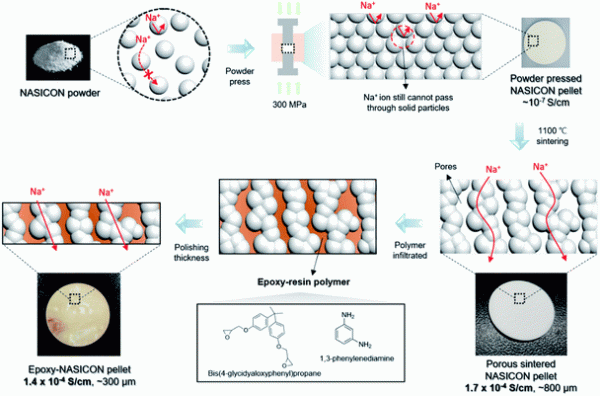An epoxy-reinforced ceramic sheet as a durable solid electrolyte for solid state Na-ion batteries
- Journal
- Journal of Materials Chemistry A
- Vol
- 8
- Page
- 14528-14537
- Year
- 2020
In a conventional Na-ion battery system using liquid electrolyte, there are critical safety issues due to the instability of the liquid electrolyte. Na3Zr2Si2PO12 (NASICON) solid electrolyte is a material that is sufficient to replace a liquid electrolyte as it has high ionic conductivity and thermal and electrochemical stability. However, as there is a large interfacial resistance in the NASICON solid electrolyte powder, even when used in combination with a polymer electrolyte, the advantageous effects of ceramics are not easily exhibited. In this study, we propose a top-down method of combining a polymer with a ceramic in which an ion transport channel is previously formed. In this method, a NASICON solid electrolyte is partially sintered to form ion transport channels. Then the NASICON solid electrolyte pores are filled with an epoxy polymer to increase the strength of the epoxy-NASICON composite electrolyte. This method demonstrates the possibility of our composite electrolyte being used as a thin and strong film. As a result of our methods, the ionic conductivity and thermal and electrochemical stability of NASICON were maintained, while the physical strength was enhanced by approximately 2 times. In addition, a capacity of 120 mA h g−1 and stability of 20 cycles were confirmed in a half cell with a Na3V2(PO4)3 cathode and Na metal. This method proposes a new direction for research regarding composite electrolytes created using an oxide-based solid electrolyte.

